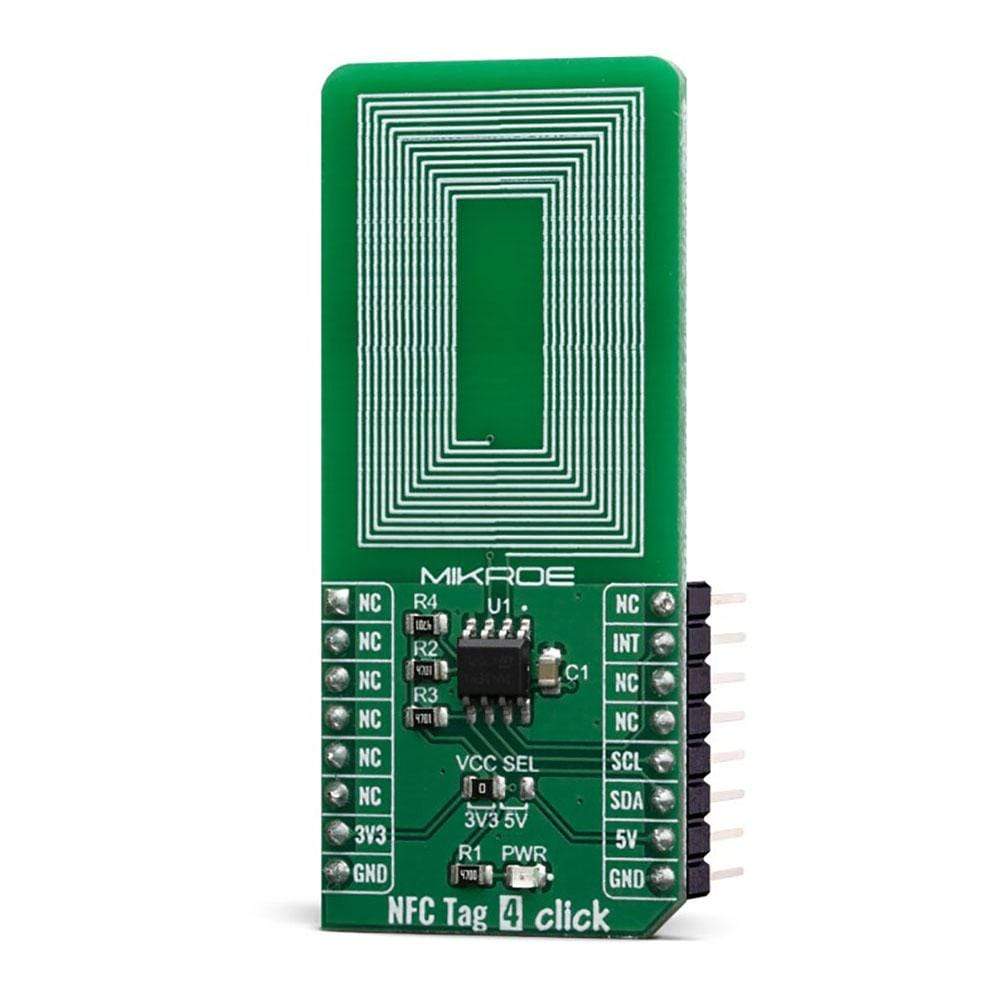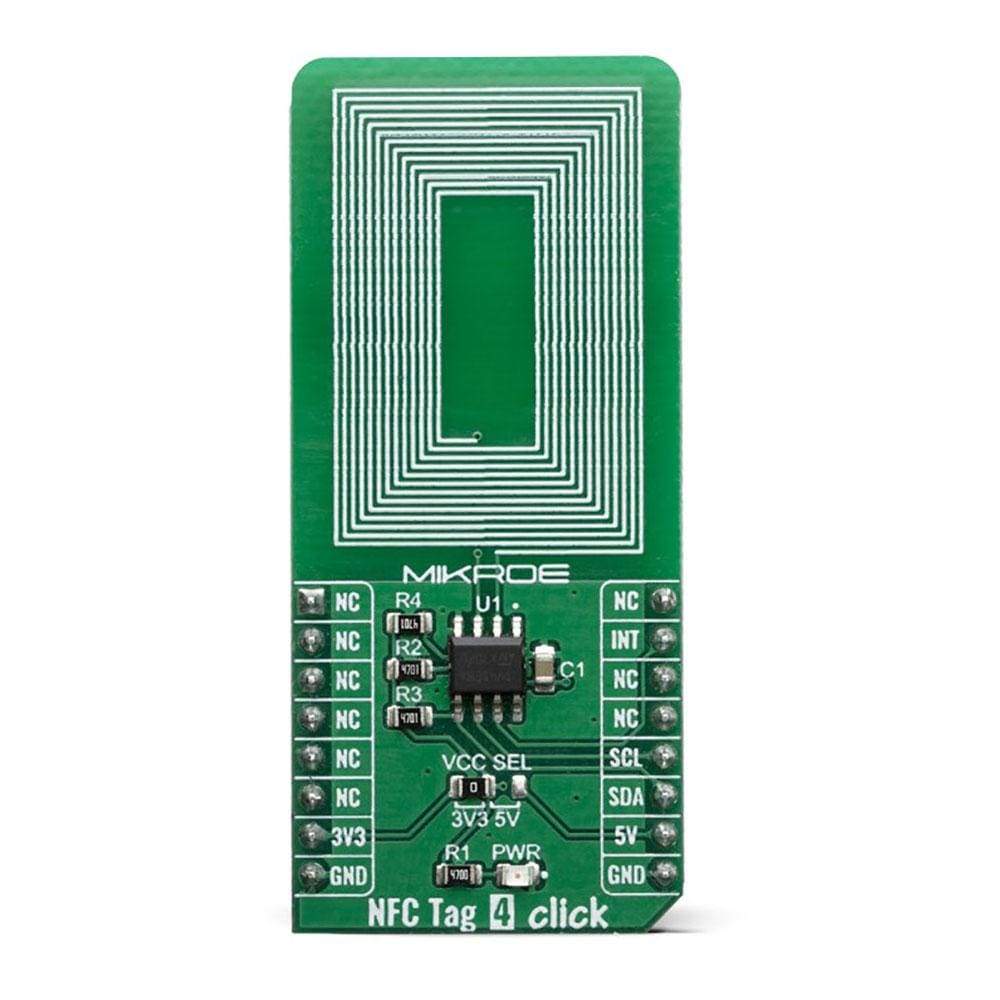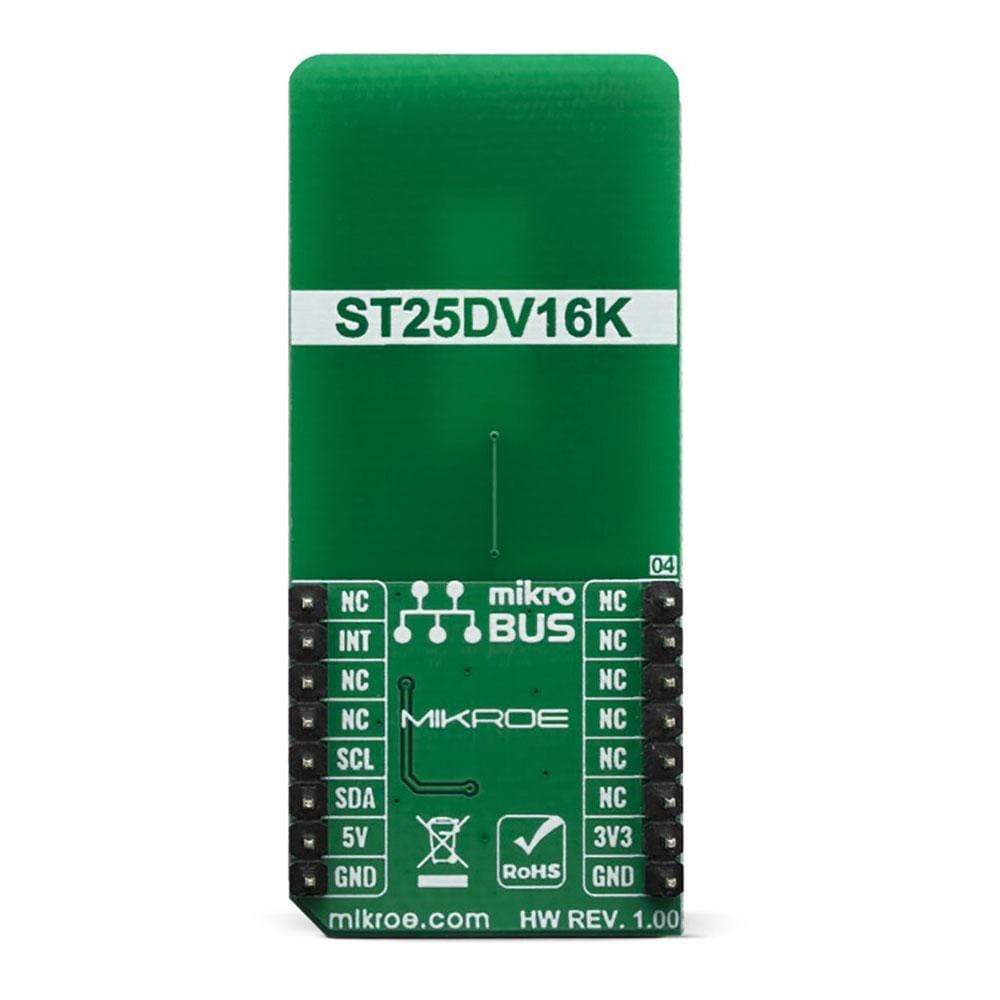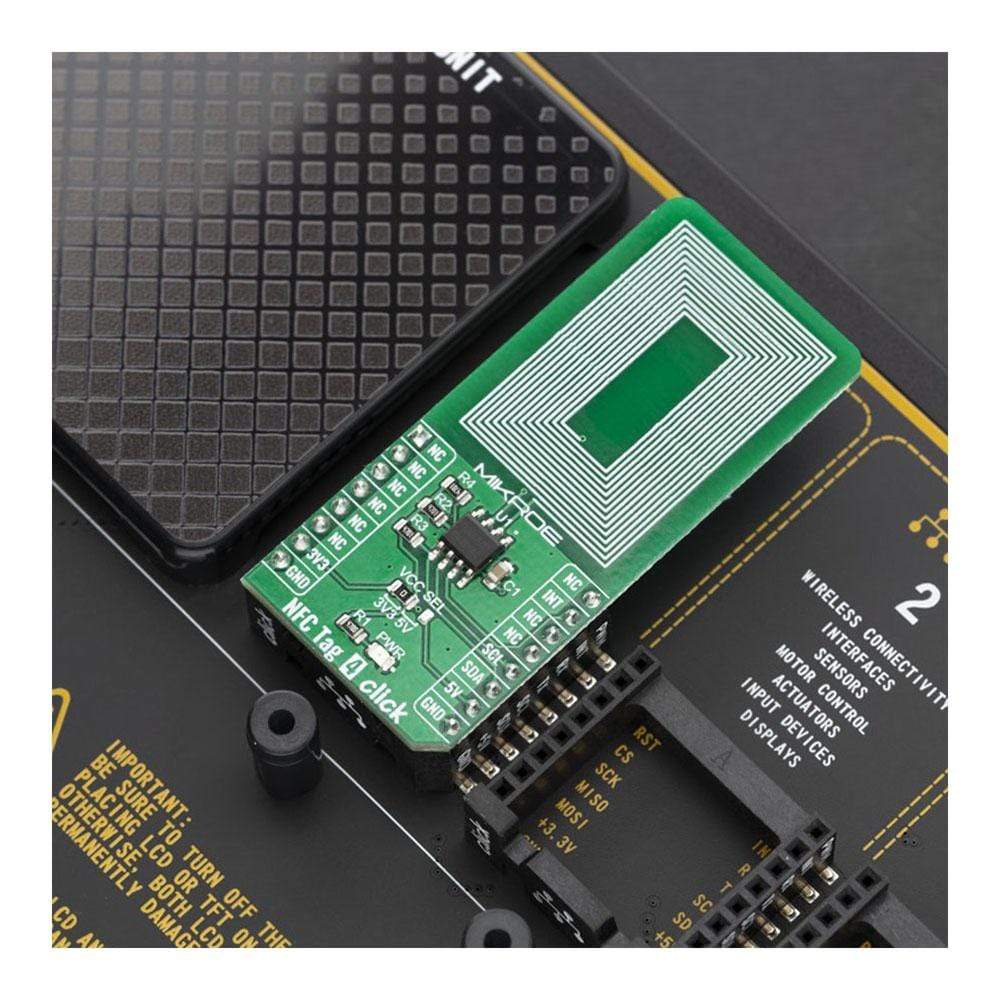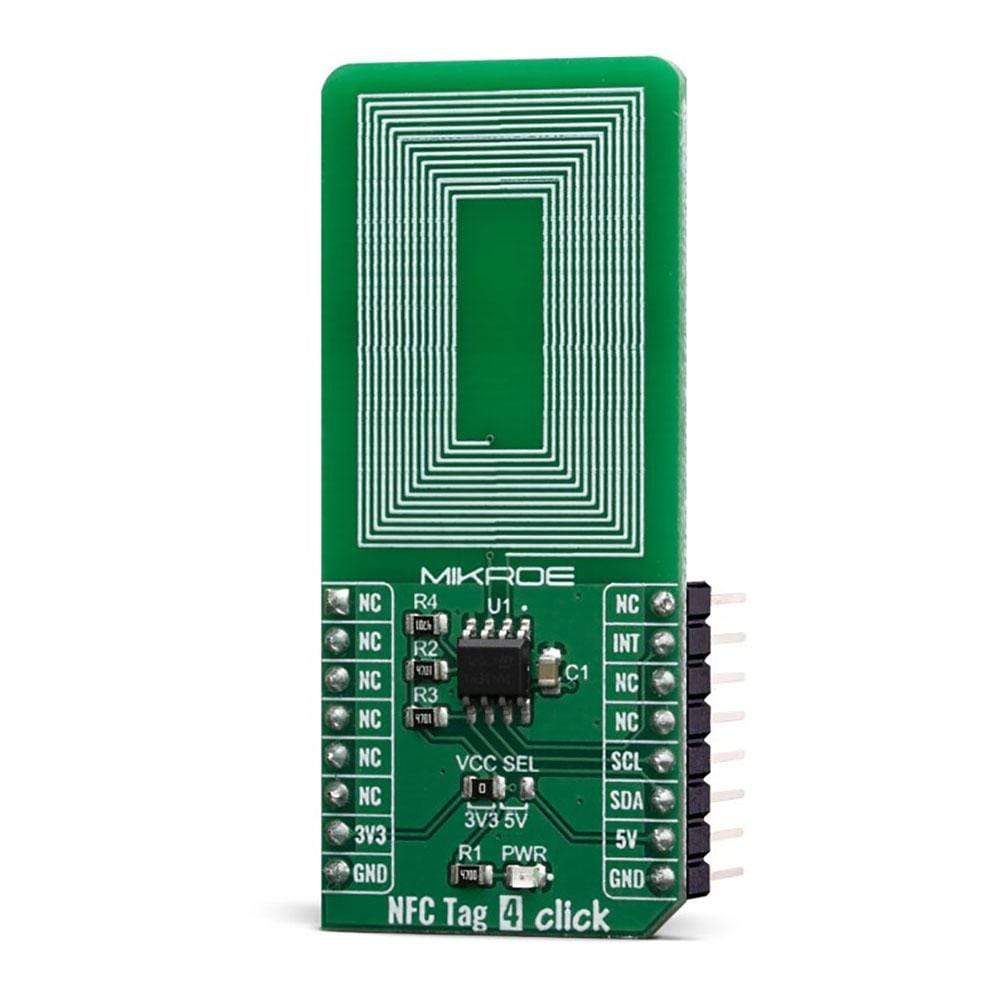
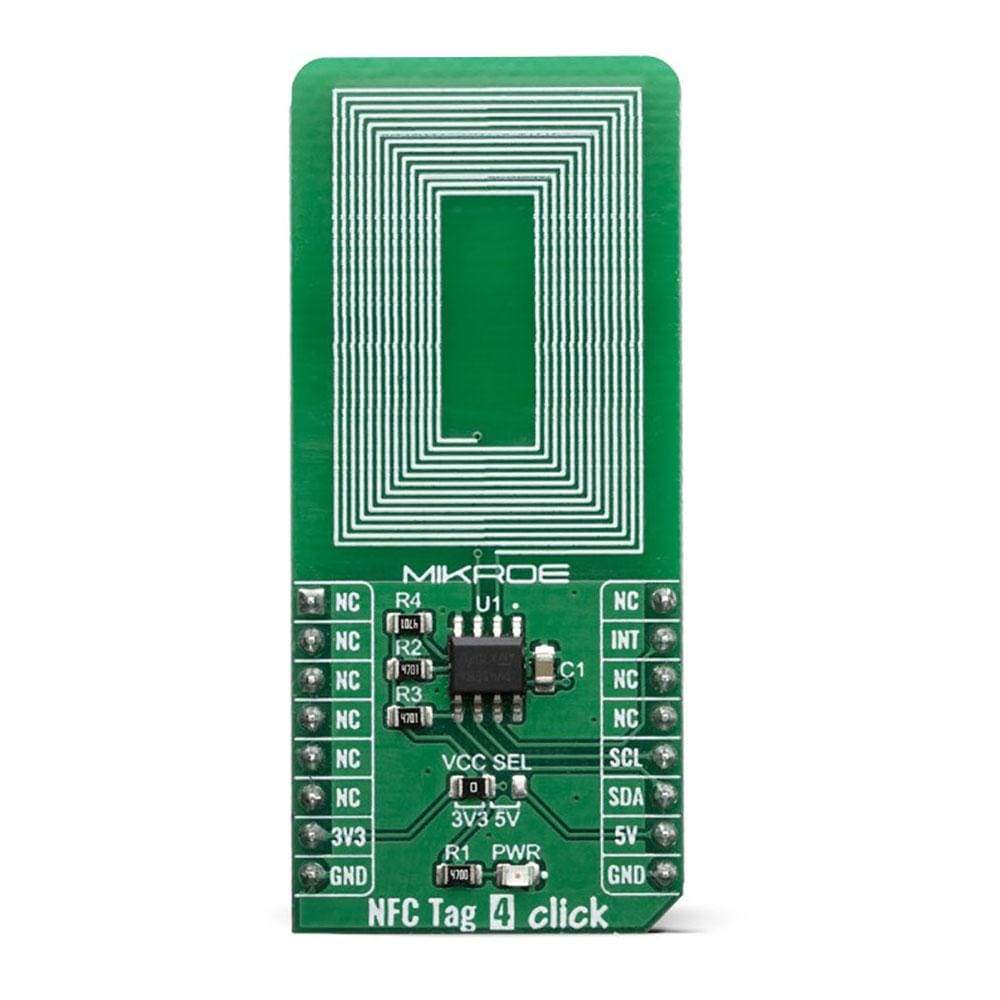
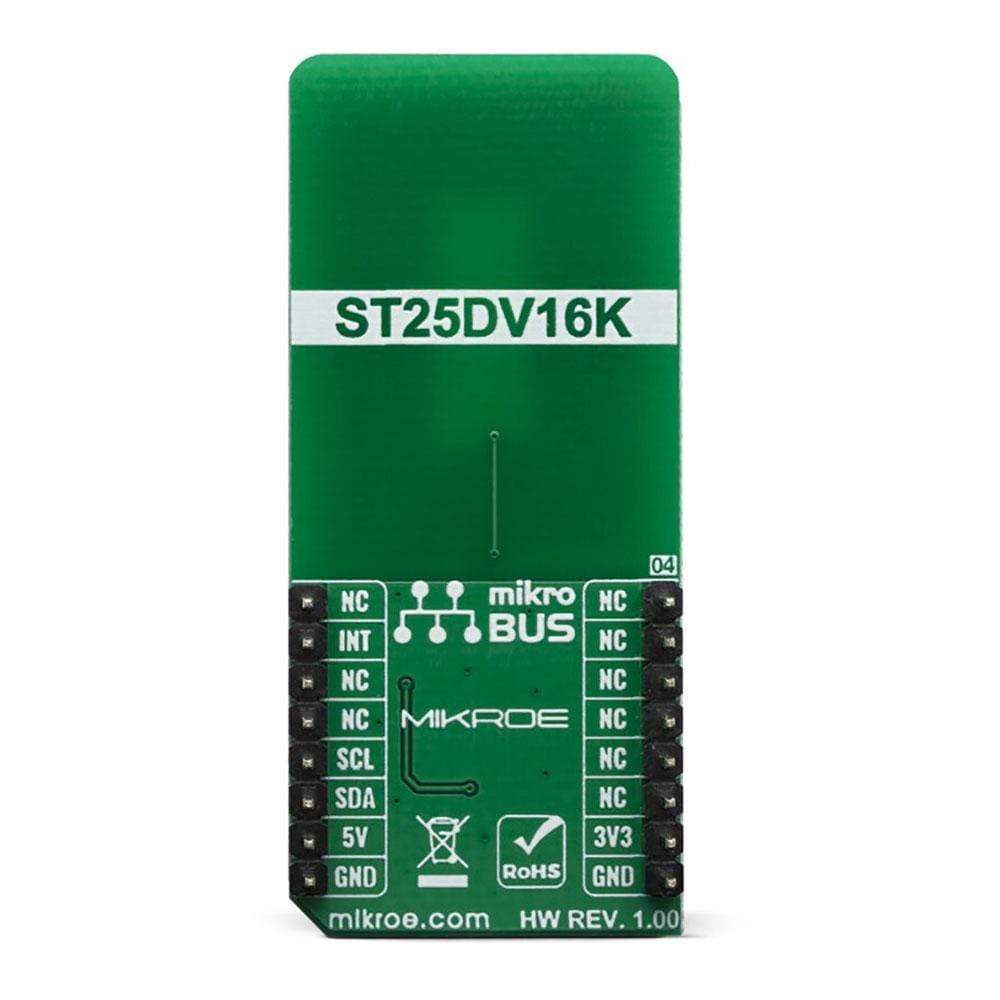
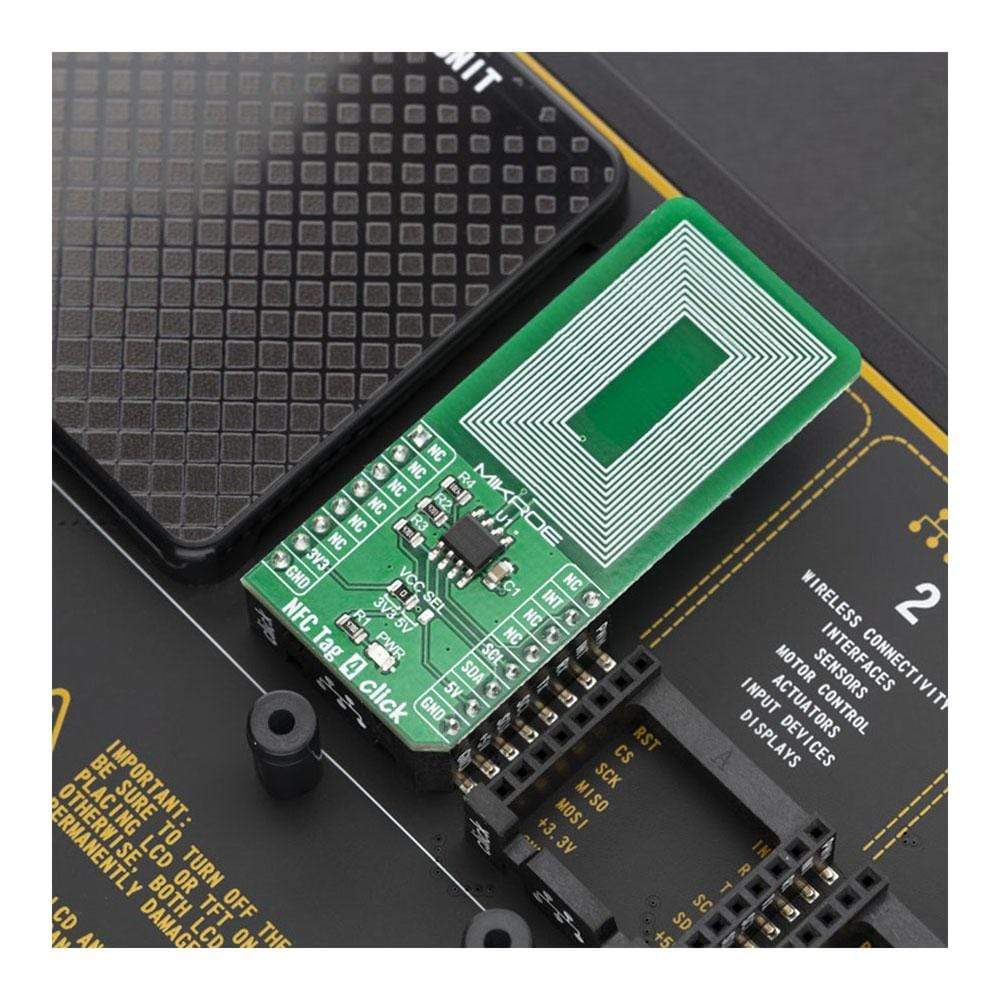
Overview
The NFC Tag 4 Click Board™ is NFC tag device, offering 16 Kbit of electrically erasable programmable memory (EEPROM). This Click Board™ offers two communication interfaces. The first one is an I2C serial link and can be operated from a DC power supply. The second one is a RF link activated when Click Board™ act as a contactless memory powered by the received carrier electromagnetic wave. It is perfectly suited for using in wide variety of applications, such as NFC enabled business cards, stickers, wristbands, key fobs, pens, movie passes, hang tags, medication bottles, and many more.
The NFC Tag 4 Click Board™ is supported by a mikroSDK compliant library, which includes functions that simplify software development. This Click Board™ comes as a fully tested product, ready to be used on a system equipped with the mikroBUS™ socket.
Downloads
Das NFC Tag 4 Click Board™ ist ein NFC-Tag-Gerät mit 16 Kbit elektrisch löschbarem programmierbarem Speicher (EEPROM). Dieses Click Board™ bietet zwei Kommunikationsschnittstellen. Die erste ist eine serielle I2C-Verbindung und kann über eine Gleichstromversorgung betrieben werden. Die zweite ist eine HF-Verbindung, die aktiviert wird, wenn Click Board™ als kontaktloser Speicher fungiert, der von der empfangenen elektromagnetischen Trägerwelle angetrieben wird. Es eignet sich perfekt für den Einsatz in einer Vielzahl von Anwendungen, wie z. B. NFC-fähigen Visitenkarten, Aufklebern, Armbändern, Schlüsselanhängern, Stiften, Kinokarten, Hängeetiketten, Medikamentenflaschen und vielem mehr.
Der NFC Tag 4 Click Board™ wird von einer mikroSDK-kompatiblen Bibliothek unterstützt, die Funktionen enthält, die die Softwareentwicklung vereinfachen. Dieses Click Board™ wird als vollständig getestetes Produkt geliefert und ist bereit für den Einsatz auf einem System, das mit der mikroBUS™-Buchse ausgestattet ist.
| General Information | |
|---|---|
Part Number (SKU) |
MIKROE-3659
|
Manufacturer |
|
| Physical and Mechanical | |
Weight |
0.019 kg
|
| Other | |
Country of Origin |
|
HS Code Customs Tariff code
|
|
EAN |
8606018716425
|
Warranty |
|
Frequently Asked Questions
Have a Question?
Be the first to ask a question about this.

